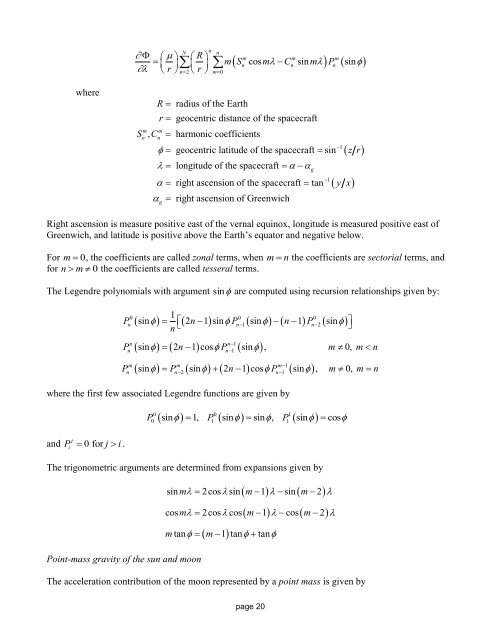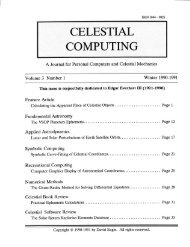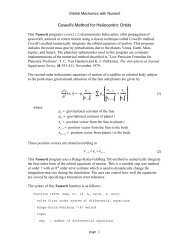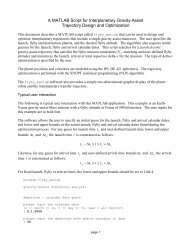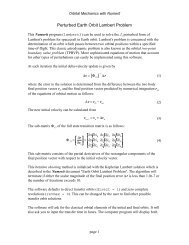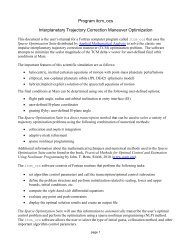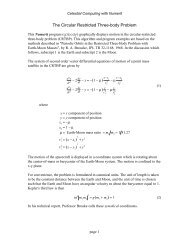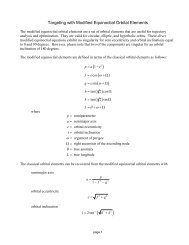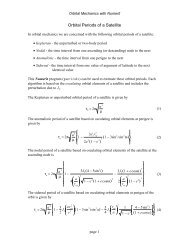PDF document - Orbital and Celestial Mechanics Website
PDF document - Orbital and Celestial Mechanics Website
PDF document - Orbital and Celestial Mechanics Website
Create successful ePaper yourself
Turn your PDF publications into a flip-book with our unique Google optimized e-Paper software.
N n n R r n2 r m0 m m m ncos nsin n sinm S m C m PwhereSmnR r radius of the Earthgeocentric distance of the spacecraftm, C harmonic coefficientsn geocentric latitude of the spacecraft sin longitude of the spacecraft 1 right ascension of the spacecraft tan y x right ascension of Greenwichgg1zrRight ascension is measure positive east of the vernal equinox, longitude is measured positive east ofGreenwich, <strong>and</strong> latitude is positive above the Earth’s equator <strong>and</strong> negative below.For m 0, the coefficients are called zonal terms, when m n the coefficients are sectorial terms, <strong>and</strong>for n m 0 the coefficients are called tesseral terms.The Legendre polynomials with argument sin are computed using recursion relationships given by:1P n P n Pn sin 2 1sin sin 1 sin0 0 0n n1 n2n1 nP sin 2n 1 cos P sin , m 0, m nnn11 P sin P sin 2n 1 cos P sin , m 0, m nm m mn n2 n1where the first few associated Legendre functions are given byj<strong>and</strong> P 0 for j i .i P sin 1, P sin sin , P sin cos0 0 10 1 1The trigonometric arguments are determined from expansions given byPoint-mass gravity of the sun <strong>and</strong> moon sin m 2cos sin m 1 sin m 2 cos m 2cos cos m 1 cos m 2 mtan m1 tan tanThe acceleration contribution of the moon represented by a point mass is given bypage 20


